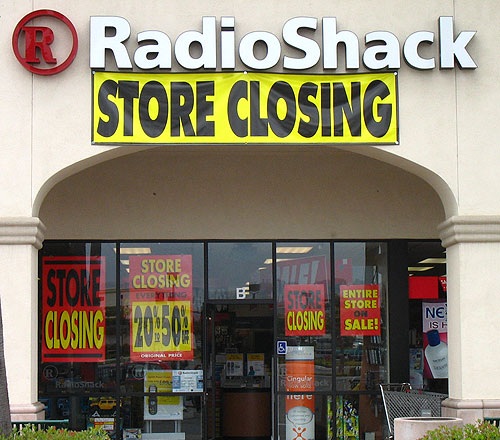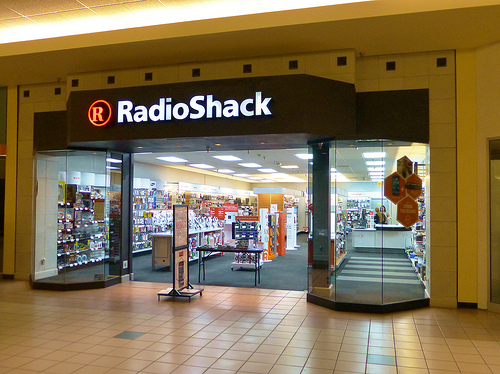After almost a century of providing its customers with a one-stop-shop for components, gadgets, and computers, RadioShack has declared bankruptcy and will close its business.

The company officially filed the paperwork Thursday evening with $1.2 billion in assets, and $1.38 billion in liabilities; included was a listing between 50,000 and 100,000 creditors.
Immediately after the filing, RadioShack announced a deal to sell up to 2,400 of its approximately 4,000 stores. Among those picking up the property is wireless company Sprint, a $6 million investor in RadioShack. The company will use approximately 1,750 of the shops to create a “store within a store”, wherein it will sell Sprint services and devices, along with RadioShack branded components and accessories.
The remaining lot of US-based stores will close down (the company’s operations in Mexico and Asia were not a part of the company’s Chapter 11 filing).
“These steps are the culmination of a thorough process intended to drive maximum value for our stakeholders,” Joe Magnacca, RadioShack’s CEO said in a statement. He added discussions are underway to sell the company’s remaining assets.
The bankruptcy announcement comes as no surprise to anyone remotely familiar with consumer electronics companies. RadioShack has been in a long, slow decline, and its losses have continuously mounted over the years. Case in point: its latest quarter sales were down 16% from a year ago.

With an expanding sales-decreasing / debt-increasing ratio, RadioShack was faced with the pressure of maintaining more than 5,000 stores at the start of 2014. The obvious solution would be to board up a number of them until the company was able to right its ship. Unfortunately, what most people don’t realize is that it’s more costly to close a store than to keep one open — this is due to such things as severance, liquidating merchandise, and paying penalties to get out of a lease.
Simply put, RadioShack was so low on cash that the company could not afford to close enough of the stores suffocating the business. But that didn’t keep them from trying. In March 2014, the company announced a plan to close 1,100 stores, but by October of the same year, only 175 locations had actually shut down. Come the end of 2014, RadioShack found itself still the owner of thousands of non-profiting stores, and in several different battles with multiple lenders to get the green light to close them down.
Reality finally set in — it was time to pull the plug on the company altogether, hence the filing.
RadioShack opened its first store and mail-order operation in 1921 in Boston to serve the needs of radio officers aboard ships. In 1963, it was bought by Tandy Corporation.
At the height of its popularity the company proudly marketed the idea that 90% of the US population lived within minutes of a RadioShack store. Its most popular products include one of the first mass-market personal computers, the TRS-80, released in 1977, and one of the first-ever laptops, the Model 100, which was released in 1983. The company was also one of the early sellers of both cell phones and satellite television systems.
Since then, RadioShack has made a series of missteps — this includes slowing down its selling of computers, and completely missing out on the chance to be one of the leaders of the digital revolution when it refused to sell products online.
With the large-scale acceptance of online shopping nowadays, the company’s brick-and-mortar stores have become dead weight for the company. RadioShack did make a last ditch effort to revitalize its brand with a 2014 Super Bowl commercial, but anyone who visited one of its stores found it not so much a destination for the latest electronics and components, but more so a place for odd-ball gadget accessories.
As a result, any interest the company was able to generate via that prime time advertisement quickly disappeared behind the reality that RadioShack no longer carried the products that today’s tech-savvy customer wants.
As part of its bankruptcy filing, RadioShack secured a $285 million in debtor-in-possession financing commitment from its current asset-backed lenders group. The company will be working with legal advisor Jones Day, investment bank Lazard Freres, and financial advisors The MAEVA Group and FTI to see this company closing through.
RadioShack will now join a growing group of its former competitors, including Circuit City, CompUSA, and Nobody Beats the Wiz, all of whom were once giant storefronts for electronics and gadgets, but have been forced out of business due to advancements made in the technology industry they once served.
Advertisement
Learn more about Electronic Products Magazine





